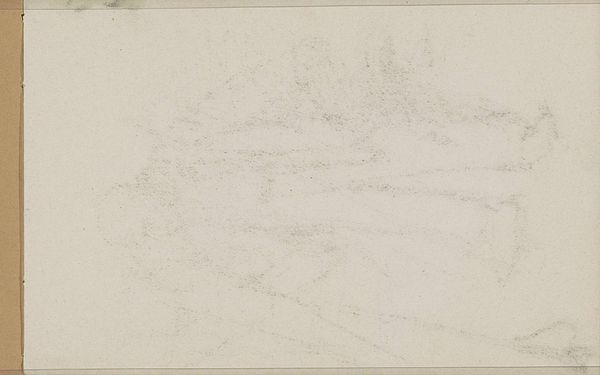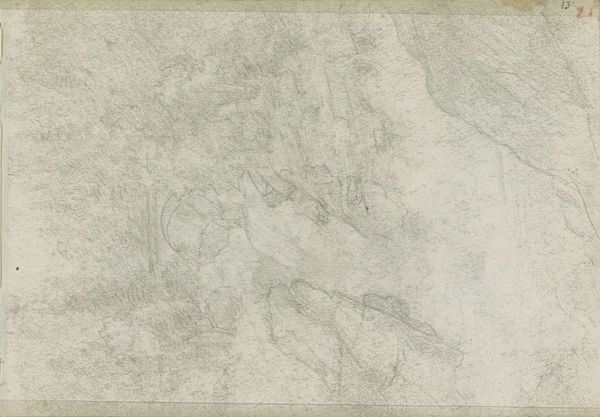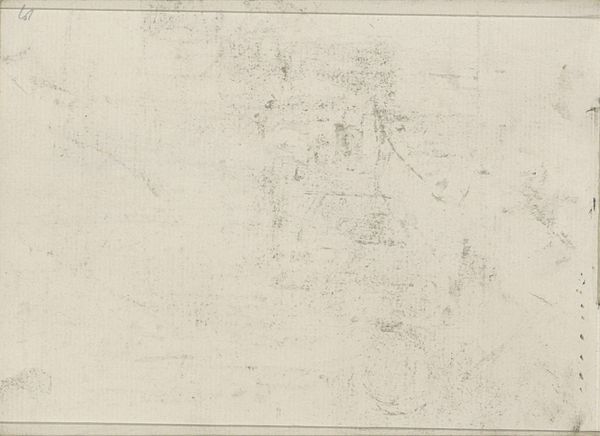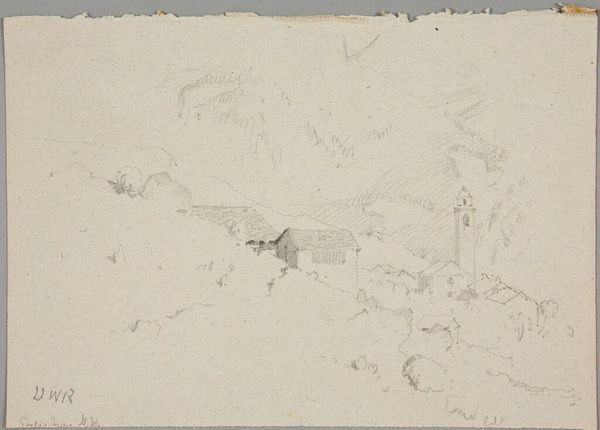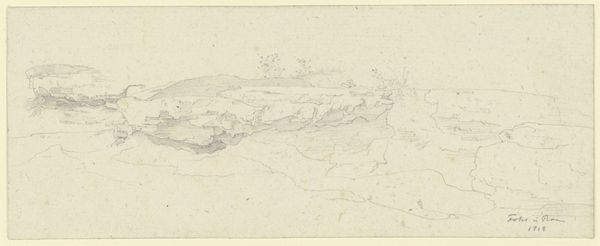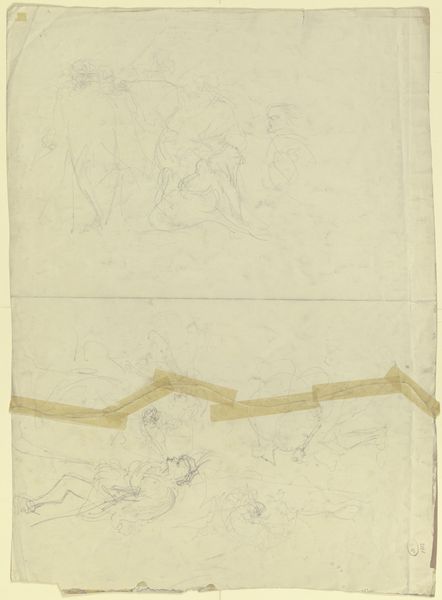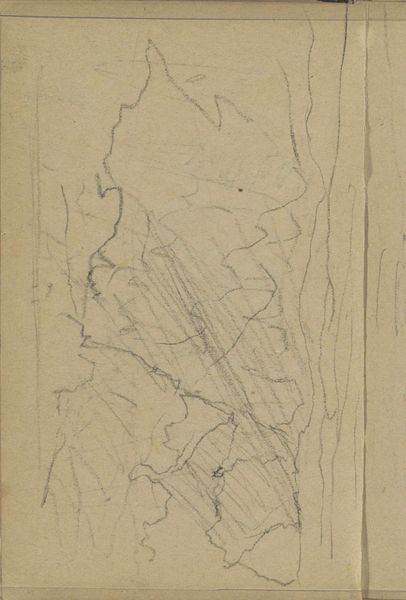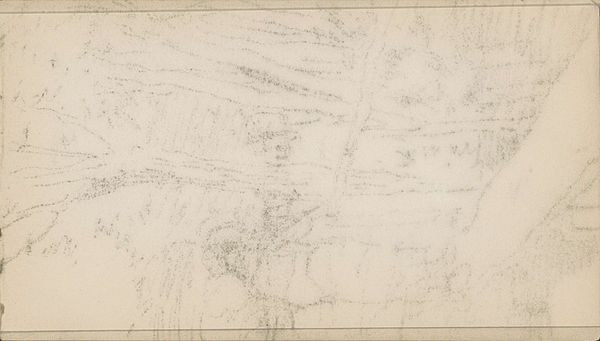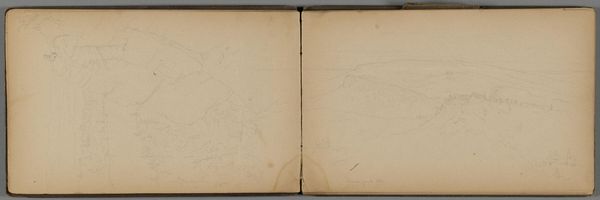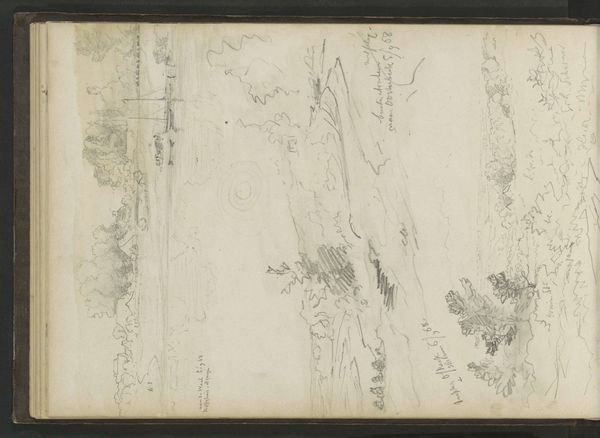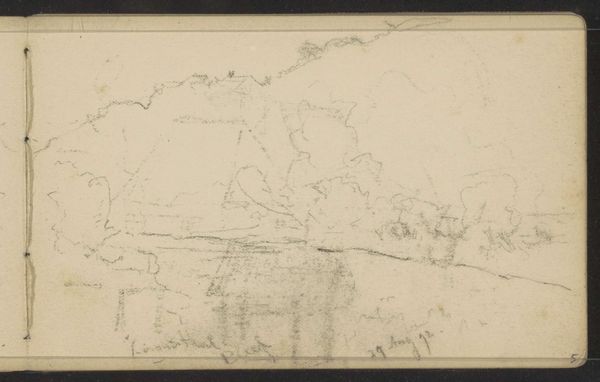
Copyright: Rijks Museum: Open Domain
Here, at the Rijksmuseum, is Jozef Israëls’ drawing, ‘Artist working on the bank of a river,’ made with graphite. The composition, divided in two, shows a landscape on the left and an artist at work on the right. The artist, sheltered by an umbrella, sits before an easel, presumably capturing the very scene we see on the left. The drawing is an interplay of lines that define form and space. Loose, sketchy lines create the illusion of rocks, water, and sky, bringing a sense of immediacy. This technique not only allows for flexibility but also reflects a modern sensibility toward capturing the transient effects of light and atmosphere. The artist's choice of a divided composition invites a comparison between the artist's interpretation and the natural world. This structure encourages us to question the nature of representation and the artist’s role. The sketchiness and the lack of detail challenge traditional notions of artistic representation. The work presents a dialogue between the artist, nature, and the act of creation itself.
Comments
No comments
Be the first to comment and join the conversation on the ultimate creative platform.
